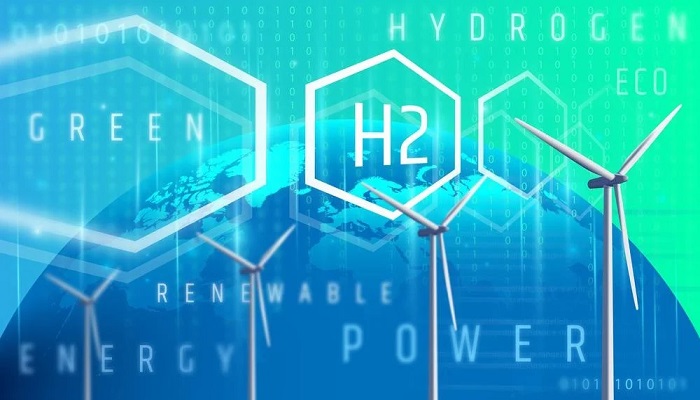The European Commission- EC on February 6 went on to present a recommendation for 90% net greenhouse gas emissions decrease within the EU by 2040 as compared to 1990 levels that was building on the planned 55% emissions decrease by 2030.
Before setting this objective, the EC went ahead and conducted a very broad and thorough impact evaluation, which got published in a 605-page report, thereby determining what the energy system might as well look like by 2040.
The impact assessment says that renewable hydrogen as an energy vector goes on to appear like a key technology of the future EU energy system, thereby including so as to produce e-fuels that are both gaseous and liquid and to contribute in order to decarbonise the hard-to-abate sectors like aviation and maritime transport, among others.
The 90% emissions reduction objectives, go on to represent by the S3 scenario in the study, will go on to require 100 million tonnes of oil equivalent- Mtoe of green hydrogen by 2040- around 35 million tonnes of H2 per annum- Mtpa, and also a further 37Mtoe of e-fuels that are made from renewable H2 as well as captured carbon dioxide or carbon monoxide.
Just about 95Mtoe of hydrogen will go on to be consumed in this 2040 scenario, thereby suggesting that 5Mtoe will be exported to non-EU nations, and around 50Mtoe or 17.5Mtpa of this green H2 will get to be used for the e-fuels production.
Approximately 17Mtoe or 6Mtpa would get used within industry, with another 16MToe or 5.6Mtpa within the domestic transport, yet another 1 TWh for international shipping- 0.3Mtpa, a basic amount for international aviation, approximately 6Mtoe or 2Mtpa for non-energy-like chemicals, and another 6Mtoe listed as other, anticipatedly including power-energy storage as well as heating.
The assessment goes on to explain that hydrogen would be required for energy storage in order to support the operation of the power sector, which has high shares of variable renewable energies, thereby offering seasonal storage.
Apparently, hydrogen would only constitute 3% of the energy that is used in the residential sector by 2040, which is about 4Mtoe, with most of the residential heating happen to be coming from electric heat pumps, biomass as well as waste, and also district heating too, as well as a small amount of natural gas.
But the impact assessment happens to add a caveat that the role of RFNBOs when it comes to the decarbonization of the building sector is pretty uncertain.
The EU at present looks to produce 10 million tonnes- almost 8.4Mtoe of green hydrogen by the decade-end while importing another 10 million tonnes from outside the bloc, but that is on track to miss both of these objectives.
Transport breakdown
Of the 16Mtoe of green hydrogen that are used in the transport sector, 90% of this will go on to be consumed by road transport alone.
It further adds that 40Mtoe of e-fuels will also be needed in the transport sector, in spite of saying earlier in the document that just 37Mtoe will be required in total under the S3 scenario. The discrepancy may as well be due to the fact that it defines the e-fuels differently across various parts of the study — the definition, apparently, includes green ammonia in the transport sector of the report, but before, it defined e-fuels made from electricity, i.e., green hydrogen as well as carbon that does not include ammonia.
It is well to be noted that in 2040, 5% of the EU’s passenger car fleet will go on to have a fuel-cell drivetrain, the evaluation states, needing around 5Mtoe of H2.
However, the demand when it comes to hydrogen from heavy goods vehicles such as trucks would be far higher, at almost 13% of the EU fleet, which includes both fuel cells as well as H2 internal combustion engines, with battery trucks making up almost 24% of the truck fleet. Over 50% of these vehicles could still be running on conventional diesel in 2040.
Because of the higher efficiency of batteries as compared to hydrogen, electric trucks will only need around 6Mtoe, vis-à-vis about 9Mtoe or 3.2Mtpa for H2 trucks.
Around 16% of the bus as well as coach fleet will be powered by hydrogen in 2040, with 37% powered because of batteries, and the rest, 47%, still running on conventional fossil fuels, which also include diesel hybrids.
It is worth noting that the trains will go almost completely electric, with less than 1% that would run on hydrogen, on the routes where electrification, which means overhead cables or batteries, is not feasible or even possible.
The fact is that the international shipping will be dominated by biofuels as well as e-fuels in 2040, each of which will require around 15Mtoe having less than 1Mtoe of hydrogen that are being used directly.
In aviation, almost two-thirds of the energy needed by planes within the EU and leaving the EU will still happen to come from fossil fuels in the 2040 S3 scenario, with another 24% coming from biofuels, 13% from e-fuels, which is around 5Mtoe and 1.1% from the direct usage of hydrogen, which is almost 0.4Mtpa.





































